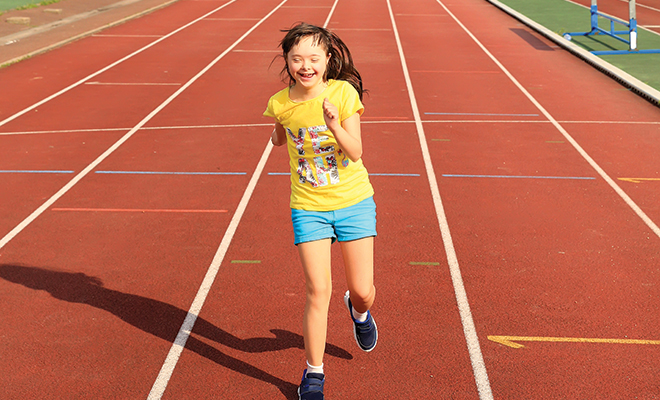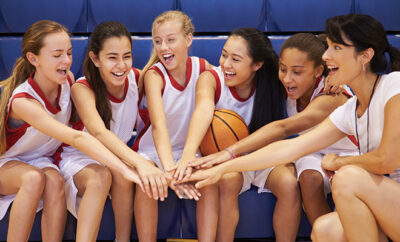
Adaptive Sports: Reaching Kids On and Off the Field
Everyone deserves a chance to play sports; parents of special needs children will wholeheartedly agree with that statement.
There was a time when kids with physical impairments were left with only one choice when it came to sports: being a spectator. Thankfully, countless adaptive sports organizations have spent the last 50 years working to provide recreational sport opportunities and programs specifically designed for children and young adults with special needs.
What are adaptive sports? They are specialized sports and recreation activities for children, adults and veterans with physical disabilities to ensure opportunities equal to their peers. By definition, adaptive sports are like any other sport, but some of the rules and/or equipment has been redesigned to accommodate athletes with physical differences or impairments. From golf and basketball to skiing and soccer, there are no boundaries with the sports that can be “adapted” to meet the challenges of youngsters who want to play.
How It All Began
Adaptive Sports may seem relatively new, but this concept began in the late 1940s as a means to rehabilitate veterans from World War II, then the Korean Conflict and the Vietnam War. The first and most common adaptive sport in those early days was skiing; one of its early pioneers was Jim Winthers. He was not only a WWII veteran, he was a member of the U.S. 10th Mountain Division, an elite group of military skiers specifically trained for alpine warfare. After being wounded in battle, Winthers began using techniques he saw in Europe in the early 1950s to teach fellow veterans to ski on one leg.
Since those humble beginnings, non-profit organizations such as Disabled Sports USA and Adaptive Sports USA have dedicated themselves to creating a world in which people of all abilities have a chance to play sports. Youth adaptive sports organizations such as Ignite Adaptive Sports and Special Olympics followed, all sharing a mission of helping youth on and off the field.
Miracle League Baseball
Miracle League Baseball started in 1998 with a meager 35 players, but within two years, the first official Miracle League complex was created and on opening day their roster grew to 120 players. This unique adaptive sports program’s mission is “baseball for all” and their playing fields are specially designed for kids age four and up with disabilities. These playing fields consist of cushioned rubberized and completely level surfaces for youth with wheelchairs and other mobility devices. Most Miracle League fields are outfitted with wheelchair-accessible dugout areas, restrooms, concession stands and picnic pavilions.
The rules of Miracle League Baseball are simple: “Everyone gets a base hit, everyone scores, and at the end of the game, both teams win.” The organizers put out requests for volunteers each season. These volunteers are known as “buddies” who help the players hit the ball, run the bases and play in the outfield.
To date, there are over 200,000 players with disabilities participating in Miracle League Baseball in 46 U.S. states along with leagues in Puerto Rico, Canada, Australia and Mexico.
Disabled Sports USA
The Central California Adaptive Sports Center in Shaver Lake, California, part of the network of Disabled Sports USA, has been changing young lives since 1967. This non-profit offers many innovative adaptive sports opportunities for disabled athletes, but one of their more notable is their adapted alpine ski and snowboard racing, created in honor of Diana Golden, the American disabled ski racer who won 10 world and 19 United States championships between 1986 and 1991.
For more than five decades, Disabled Sports USA has focused on one goal: to improve the lives kids and young adults with disabilities by providing sports and recreation opportunities. Their motto of “If I can do this, I can do anything!” has been a welcomed mantra for young participants with visual impairments, amputations, spinal cord injury, multiple sclerosis, head injury, cerebral palsy, spina bifida, neuromuscular/orthopedic conditions, autism and related intellectual disabilities. Their adaptive sports programs include skiing, snowboarding, tennis, equestrian therapy, rock climbing, water skiing and many more.
Not every sport will be appropriate or safe, and a special needs child may not want or be able to play. Instead of being pushed aside, young athletes are encouraged to participate another way, such as being an equipment handler for their team. At the core of all adaptive sports program is the desire to give all kids a chance to learn to play together as a team, learn to be patient, take turns, treat their teammates and others with dignity, respect and kindness. It’s exactly this kind of opportunity that parents of physically and intellectually challenged kids crave—the chance for growth and bonding opportunities with peers who can relate to their situation. ■
Sources: sporttechie.com, sportsplanningguide.com, themiracleleague.net, disabledsportsusa.org, adaptivesportsandrec.org and specialolympics.org.







